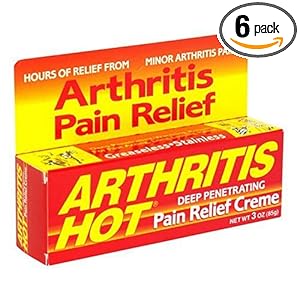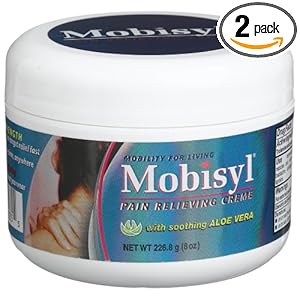8.22.2011
Arthritis Exercises: Ways To Improve Arthritic Condition (Part 2)
For your upper back, you can stand upright in front of a table, then lean over and place your hands on the table and tuck your chin back toward your collarbone. Once positioned as such, lift your upper back upward and simultaneously take a deep breath. Hold that position for 5-10 seconds and then relax while exhaling. While doing this, lower your spine slowly as you move both shoulder blades forward as if toward each other. Repeat this exercise for 10-15 repetitions.
For the shoulders and middle back, start again from an upright position standing as straight as you can, reach back and lock the fingers of both hands together. Breathe slowly and deeply and lift upward with your shoulders while at the same time, exhaling. Be sure to keep your chest up and your chin in. Repeat this for about 10-15 sets.
For the shoulders and upper chest, choose a free corner of the room to stand in and place your hands on the opposite sides of the corner. Take a step back about 18 inches from the corner. You now should be facing the corner directly with your hands on both of the walls with your body some distance from the wall itself. Keeping your chest up after inhaling, lean in toward the corner while exhaling. Repeat this exercise for 10-15 sets.
Whatever exercise program you choose, be sure to breathe properly when exercising. Oxygenation is important to any exercise regimen as it promotes a healthy heart rate and reduces fatigue; additionally oxygenation helps circulation, which is vital to achieving the flexibility and strength that you are trying to achieve in battling arthritis. Also, listen to your body. It is natural to feel a little fatigue and soreness when starting a new exercise regimen. However if the pain of soreness persists for more than one hour, or you have a decrease in mobility that lasts longer than an hour, then the regimen should be reduced until the soreness desists.
Also, look for signs of increased swelling of joints or any persistent increase of weakness; these are signs of activities that are too strenuous and a reduction in activity will be necessary. Just remember to take all new exercise regimens slowly at the start. The idea is to increase flexibility not train for the Olympics.
There are three main types of exercises to include in a basic exercise program:
Range-of-motion exercises -
These lessen stiffness and help with improving flexibility.
"Range of motion" refers to the area within which the joints move naturally or on a daily basis. Although these range-of-motion exercises can be performed every day, it is recommended that they be done at least every other day.
Strengthening exercises –
There are two types of strengthening exercises: isometric or tightening the muscles without moving the joints, and isotonic, moving of the joints for strengthening muscle movements. It is recommended to do these sets of exercises every other day, unless you are suffering from more than mild joint pain or swelling.
Endurance exercises –
The objective of these is to increase stamina. They also help with improving your inner personal / mental strength and with improving weight control and sleep.
Some of the most popular endurance exercises are stationary bike riding, walking and water exercising. And unless you are suffering from more than mild joint pain or swelling, a 20- to 30-minute workout or two to three short 10-minute bouts during the day is what is recommended, an average of three times each week. Be kind to your body, and it will be kind to you.
Arthritis Exercise Tips
Let’s sum up arthritis exercise with a few tips for all:
- Establish your own unique, exercise program so that it meets your personal health needs, budget and environment. Make sure it is safe by checking with your own professional healthcare advisor and workout trainer. And take it slow and steady like Aesop’s turtle in the race.
- Be kind to yourself. Stop if something hurts. Experiment with applying heat before exercising and warming up. Then cool off afterwards with cold packs.
- Enjoy exercising by making it a real part of your life during the week. Include range-of-motion, strengthening and endurance exercises in your routines. Vary your activities --- try a new class at a health club.
Next time, go elsewhere or join a naturalist group for weekly hikes in local parks. Keep an active folder with pockets of gyms and health clubs near you with their schedules and up-dated classes and coupon specials. Also check newspapers, local bulletin boards, postings at the gyms and clubs, etc. for healthy activities like walk-a-thons or bike-a-thons and evening / weekend hikes in which you can participate. You’ll meet new friends, have fun, get out more and exercise all at the same time.
- Exercise activities are available all around you too. No need to spend time and money elsewhere. You can borrow exercise videos, DVDs and books from public libraries. You can get active by washing windows, cleaning your house, car, pet, children’s closets, your closets, or anything! You can even earn money doing activities like walking and distributing flyers, local newspapers and coupons (check with companies who place these in and around your mailbox and door - they often need help).
Arthritis Exercises: Ways To Improve Arthritic Condition (Part 2)
*Private Label Rights To This Article
Has Been Validly Acquired.
©Netalink (2011)
Related Products for Arthritis Relief
Arthritis Hot Deep Penetrating Pain Relief Cream 3 ounce (Pack of 6)
Mobisyl Pain Relieving Creme with Soothing Aloe Vera, 8.0-Ounce Jar (Pack of 2)
Biofreeze Pain Relief 1 Gallon Pump Bottle * BIOFREEZE can effectively help relieve pain from sore muscles, muscle sprains, back, shoulder, neck pain, arthritis, painful ankle, knee, hip and elbow joints, and muscular strains. Use BIOFREEZE to relieve pain prior to ultrasound treatments, massage therapy, soft tissue trigger point therapy, rehabilitation exercises and pre and post workout stretching.
Subscribe to:
Post Comments (Atom)





No comments:
Post a Comment